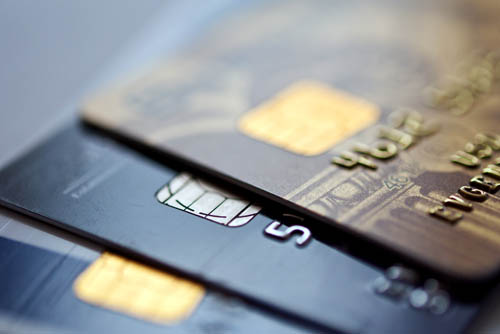
It’s easy to see why so many people have a hard time distinguishing the difference between credit cards and debit cards. After all, they look almost identical — plastic, expiration dates, 16-digit numbers across the front, and they are used to make financial transactions.
But the key difference between these 2 lies in the way these transactions are made. Debit card transactions are made by using funds that are already in a bank account, while credit cards are borrowing money to fund purchases.
Although these cards may seem similar, it is important to understand the difference so you know when to use each on appropriately.
What is a Credit Card?
Credit cards let users borrow funds from the issuing company, typically a bank. This money is to be paid back with an interest rate determined by the card issuer.
Credit cards typically fall into 4 separate categories:
- Standard: A basic line of credit
- Rewards: Offer benefits such as travel points
- Secured: Require a cash deposit as collateral
- Charge: No spending limit, but do not tolerate unpaid monthly payments
Rewards cards users can acquire a significant amount of benefits, provided they are making their monthly payments on time and in full. Your credit report will display your credit card history and usage, allowing accountable spenders to increase their credit score through timely payments.
Credit cards tend to provide better financial protection compared to debit cards. Most of the time, card holders are only liable for up to $50 so long as the theft or loss is reported within 48 hours. The liability raises to $500 after 48 hours, and the limit is removed after 60 days.
What is a Debit Card?
Debit card transactions are made using funds that currently exist in the attached bank account, as opposed to borrowing money.
3 common debit card types are:
- Standard: Uses funds directly from bank account
- Electronic Benefits Transfer (EBT): Allows qualified users to make transactions using benefits
- Prepaid: Gives access to a bank account, allowing electronic purchases up to prepaid amount.
Understanding the Differences
Debit cards are favored by frugal customers because debit cards tend to lack additional fees when compared to credit cards. These fees can include late fees, overdraft penalties, and standard annual fees.
Because the debit card directly uses funds that the user already has in their account, there isn’t much danger with regard to acquiring debt. Impulsive spenders tend to spend more than they can afford using a credit card. Using a Debit card can help keep them in check.
A common strategy for using credit cards is to use them for regular, everyday purchases such as gas or car payments, and then making the payments in full at the end of every month. This will allow you to build up your credit score, while avoiding purchasing anything you couldn’t already afford.
Source: https://www.investopedia.com/articles/personal-finance/050214/credit-vs-debit-cards-which-better.asp

